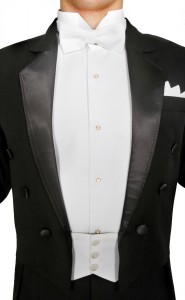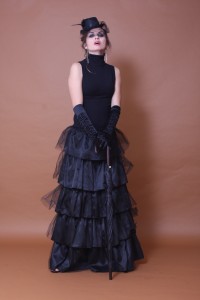
Image:© Alena Yakusheva/ Fotolia
Even though we live in the age of information technology it still happens occasionally, especially among the young and inexperienced, to be confused when it comes to what exactly a certain dress code allows. This is why we have decided to use this series of articles to acquaint you with the different dress codes and their practical meaning.
The white tie
This dress code is the most formal and takes the highest place in the social hierarchy. Such dress code is required if the event is a highly official one, as a state ball or a celebration involving royalty, a royal wedding or a diplomatic gala. A white tie dress code is also required in ceremonies such as awarding Nobel prizes and partly the Oscars. Don’t be misled by the name, it is not required that all men wear white ties literally. What is required though is that all men without exception wear a dress coat. Elements such as a white vest or bow-tie made of high-quality cotton or silk are also among the requirements. Socks should be black and almost knee-high, while shoes should be polished and also black.

Image:© dukibu/ Fotolia
A lady’s apparel may be more diverse, yet not frivolous! The gown should be either ankle-length or floor-length and a gown you must wear! The allowed fabrics are atlas, silk, taffeta or velvet. Sequins, lace, pearls and embroidery are also allowed, but have to be of the highest quality. When the weather is colder you will also need a shawl or a cape of expensive fabric. The hands should not be bare – wear gloves above the elbow. Shoes can be open or closed, formal and with a high heel. Purses are small and unobtrusive, jewelry is expensive. No replicas. Diamonds are ideal for this dress code.











Leave a Comment